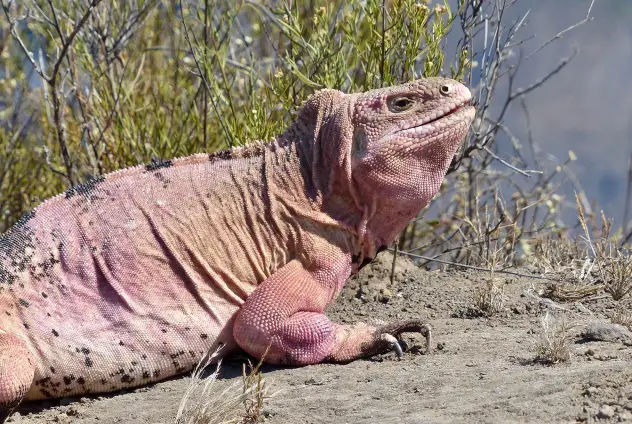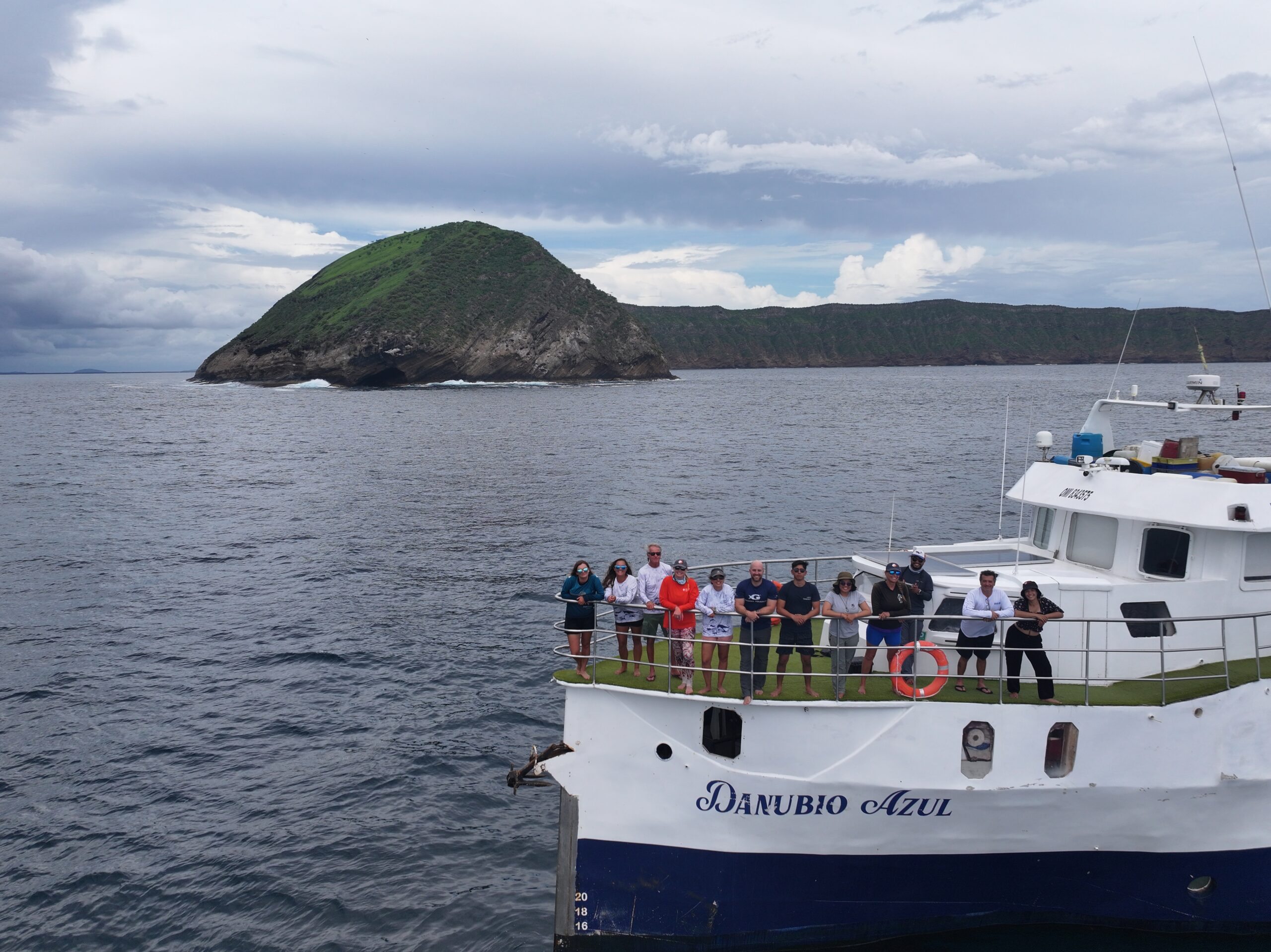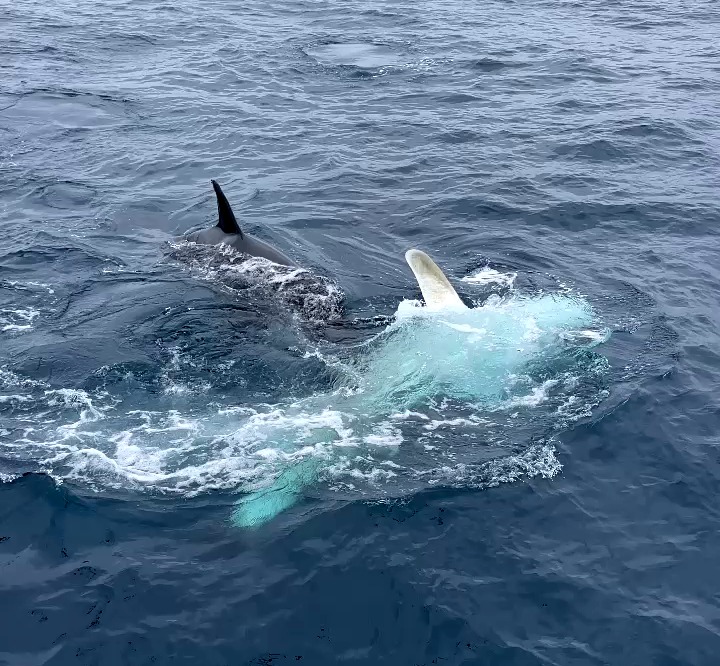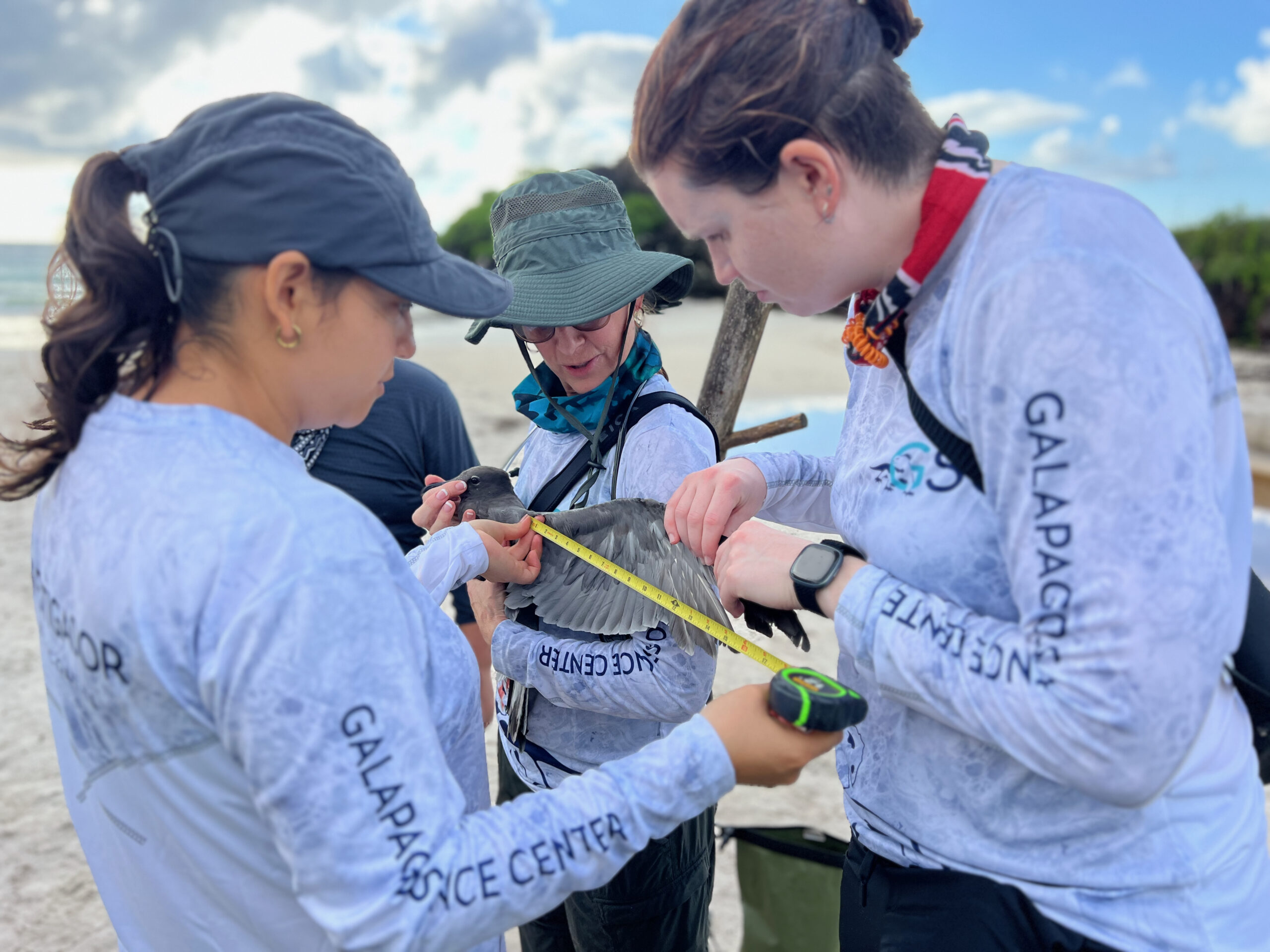Fotografía de una iguana terrestre rosada macho madura (Conolophus marthae) cerca del borde de la caldera del volcán Wolf. (Foto cortesía de Giuliano Colosimo).
Gregory A. Lewbart, Giuliano Colosimo, Christopher Gaudette, Tatiane T. Negrão Watanabe, Joshua Parker, Christian Sevilla, Glenn P. Gerber, Gabriele Gentile.
Abstract
Una de las iguanas más raras e inusuales del planeta es la iguana terrestre rosada de Galápagos (Conolophus marthae). Se han planteado varias hipótesis sobre el origen de su coloración rosada, incluyendo que el color proviene de la sangre y una relativa falta de pigmentación dérmica. Obtuvimos biopsias de piel de espesor completo de tres especies y comparamos tejidos de áreas pigmentadas oscuramente y superficies ligeramente pigmentadas. Las áreas “rosadas” de las iguanas rosadas carecen de células de pigmento (por ejemplo, melanóforos) y el tejido dérmico es rico en agregados de capilares confluentes. Esto contrastaba fuertemente con las áreas dérmicas mínimamente vasculares (sólo se observaron capilares) de las iguanas marinas y amarillas. El estrato laxum dérmico de cada sitio de biopsia contenía melanóforos, excepto la piel rosada de las iguanas rosadas. Curiosamente, las iguanas marinas tienen un estrato germinativo/granuloso epidérmico mucho más grueso, entre 2 y 10 células de espesor dependiendo de la ubicación, en comparación con el estrato germinativo/granuloso epidérmico más delgado de las iguanas terrestres (de una a tres células de espesor, con la mayoría de las áreas poseyendo sólo una o dos capas de células). Estas diferencias microscópicas podrían reflejar diferencias en el hábitat y la ecología de las tres especies.
Conoce más del artículo científico en el siguiente enlace: https://onlinelibrary.wiley.com/doi/full/10.1111/azo.12488






